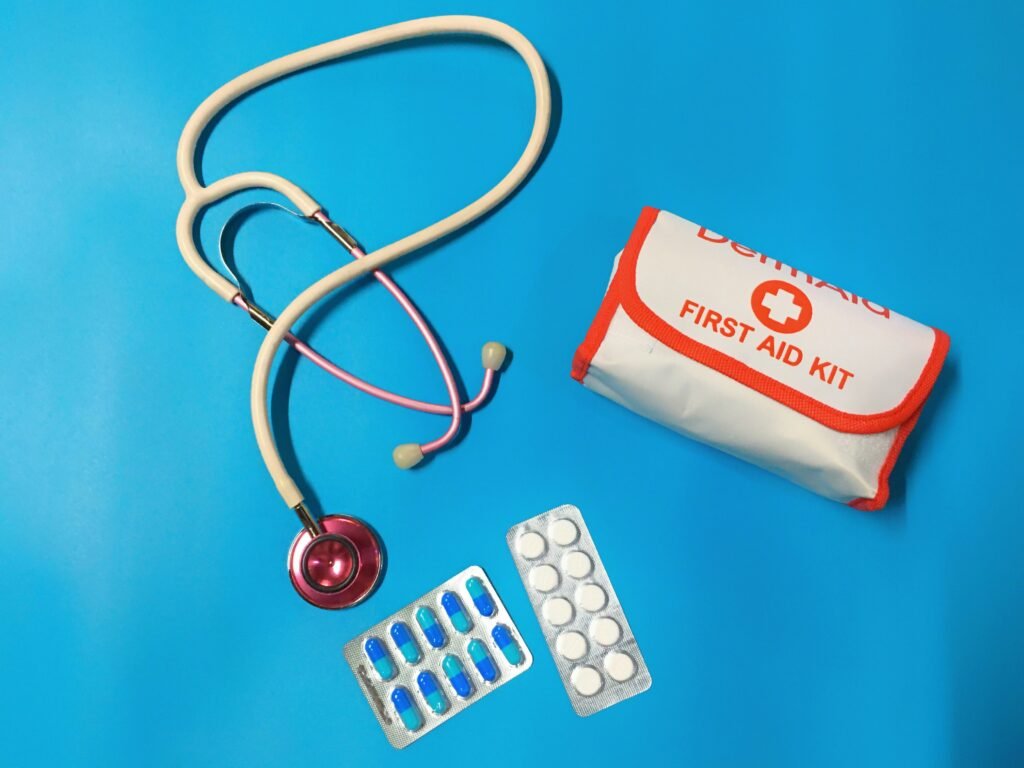When we find ourselves in the middle of a medical emergency, knowing the right strategies to effectively manage the situation can make a world of difference. Our latest guide, “Effective Strategies to Handle Medical Emergencies,” walks us through essential steps to address urgent health situations with calm and efficiency. From understanding how to perform CPR to recognizing the signs of a stroke, we’ll explore comprehensive techniques that can prepare us to handle unexpected health crises confidently and competently. Follow along as we delve into these life-saving procedures that are crucial for everyone to know. How confident do you feel when faced with a medical emergency? For many of us, the mere thought of a crisis involving health can be daunting, even overwhelming. Medical emergencies can happen at any point and anywhere, requiring immediate and efficient responses. Understanding effective strategies to handle such situations could significantly make a difference in outcomes, possibly saving lives. Let’s explore together how we can be prepared to act confidently and competently during medical emergencies.

Understanding Medical Emergencies
What is a Medical Emergency?
A medical emergency is any situation that poses an immediate threat to a person’s health, life, or environment. This can range from heart attacks and strokes to severe bleeding and respiratory distress.
Recognizing the signs of a medical emergency is crucial in taking prompt actions. Common signals include chest pain, difficulty breathing, severe bleeding, intense and persistent abdominal pain, sudden fainting, and more. Often, the help we provide before professional medical help arrives can keep the condition from worsening.
Importance of Recognizing Emergences Quickly
Recognizing these signs quickly and accurately increases the chances of a successful recovery. Being knowledgeable about these signs prepares us to act swiftly, ensuring that every second counts in such critical moments.
Preparing for Medical Emergencies
First Aid Training
Ongoing education and training are vital. Participating in certified first aid courses gives us the necessary tools and confidence to handle emergencies effectively. These courses cover CPR, use of an AED (Automated External Defibrillator), and other life-saving techniques.
Emergency Response Plans
Having an emergency medical plan in place is crucial, especially in workplaces and schools. This plan should include details like emergency exits, location of first aid kits, AEDs, and a clear chain of communication in case of a crisis.
Creating a Basic Response Plan
To begin crafting your emergency response plan, you must assess potential risks and formulate clear, actionable steps for different scenarios. This plan should be readily accessible and regularly reviewed and practiced.

Immediate Actions During Medical Emerogencies
Assessing the Situation
The initial step is to assess the situation calmly and avoid panic. Determine if the environment is safe for you and the victim. After ensuring safety, check the victim’s responsiveness. Are they awake? Can they respond to your questions?
Calling for Help
Once the situation has been assessed, call for professional medical help immediately. Clearly state your location and what the emergency is, providing as many details as possible to ensure the emergency services are well prepared upon arrival.
Administering First Aid
While waiting for professional help, administer the appropriate first aid. This could be performing CPR, controlling bleeding by applying pressure, or simply comforting and monitoring the victim if you cannot do more.
CPR Techniques
CPR (Cardiopulmonary Resuscitation) is critical when the victim is not breathing or their heart has stopped. The basic steps are straightforward:
- Compressions: Push fast and hard on the center of the victim’s chest.
- Airway: Tilt the victim’s head back and lift their chin to open the airway.
- Breathing: Give rescue breaths ensuring chest rise.
It’s wise to update these skills regularly through refresher courses.
Using an Automated External Defibrillator (AED)
If available, an AED is a valuable tool in cases of cardiac arrest. Most AED devices provide instructions once activated.
- Turn on the AED and follow the visual and voiced instructions.
- Attach the AED pads to the patient’s bare chest.
- Ensure no one is touching the patient when the AED analyzes and prepares to deliver a shock.

After the Immediate Response
Continual Monitoring
Until professional help arrives, continual monitoring of the victim’s condition is crucial. Look for any changes in their condition and be prepared to administer additional first aid if needed.
Post-Emergency Procedures
After the emergency, debrief and reflect on the incident. This can be an emotional time, and feelings of stress or trauma are natural.
Providing Emotional Support
It’s important to provide emotional support to those involved, including yourself. Understand that it’s okay to seek help if feelings become overwhelming. Counseling and support groups are great resources.

Promoting Health and Safety Awareness
Educating the Community
Empowering others by sharing knowledge and strategies for handling medical emergencies can build a community’s confidence and capability in responding to such situations. Consider organizing or participating in community first aid workshops.
Regular Updates and Training
In health and safety, staying informed is staying prepared. Regular updates on first aid procedures and refreshing skills through training sessions help maintain our readiness for emergencies.

Conclusion
Preparing and equipping ourselves with knowledge, skills, and the right attitude towards medical emergencies enhances our confidence and efficiency in handling such perilous situations. Let’s ensure we’re ready to respond not just for ourselves, but for our loved people around us and even strangers in need. After all, in the face of a medical emergency, being prepared can truly mean the difference between life and death.
Remember, the time to prepare is now. By understanding what to do before, during, and after an emergency, we can save lives. Let’s make safety a priority and keep learning and revisiting the best practices in emergency response. It’s not just about being a hero; it’s about being a caring and prepared member of our community. Together, we can handle anything that comes our way with courage and skill.


